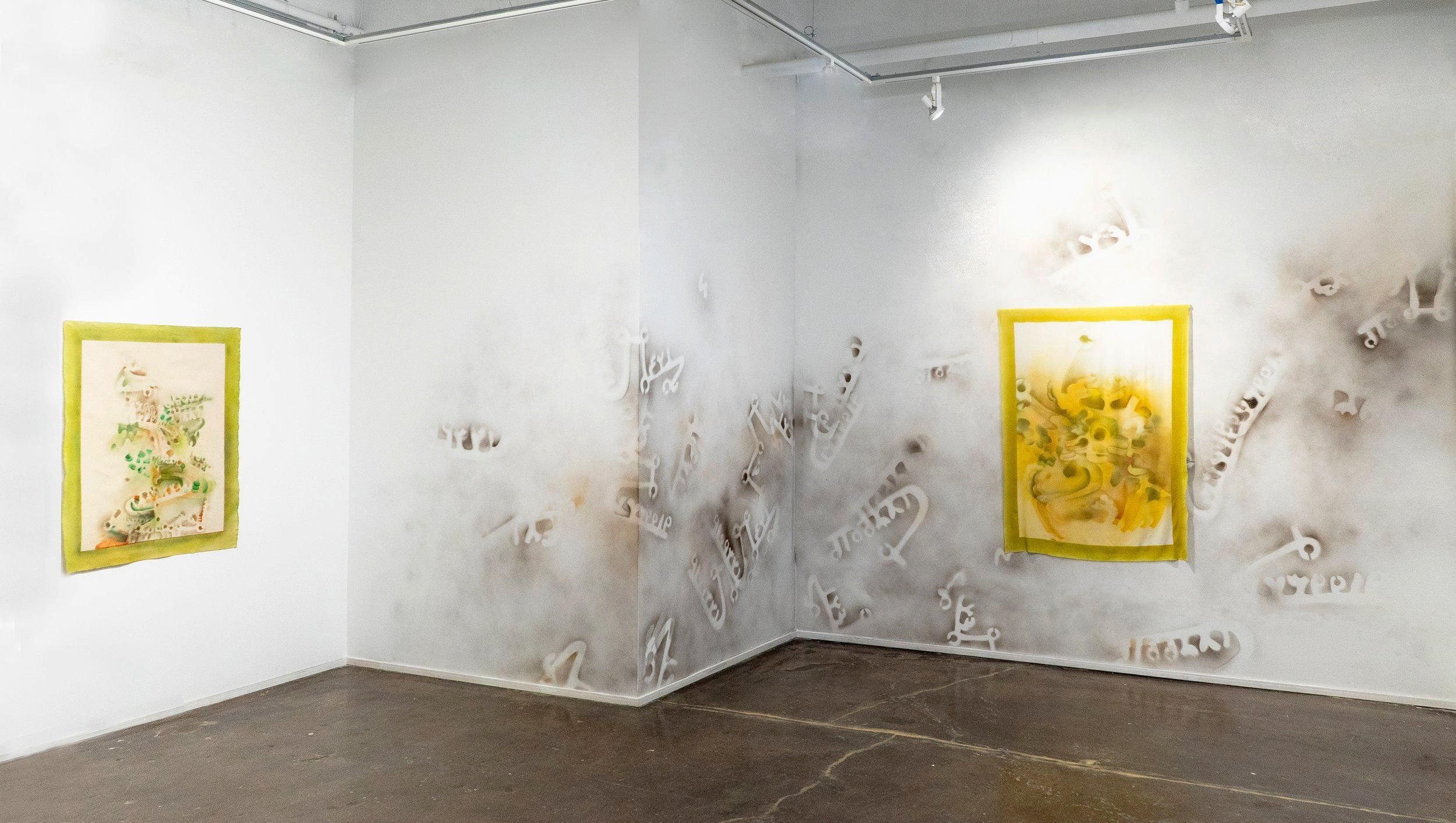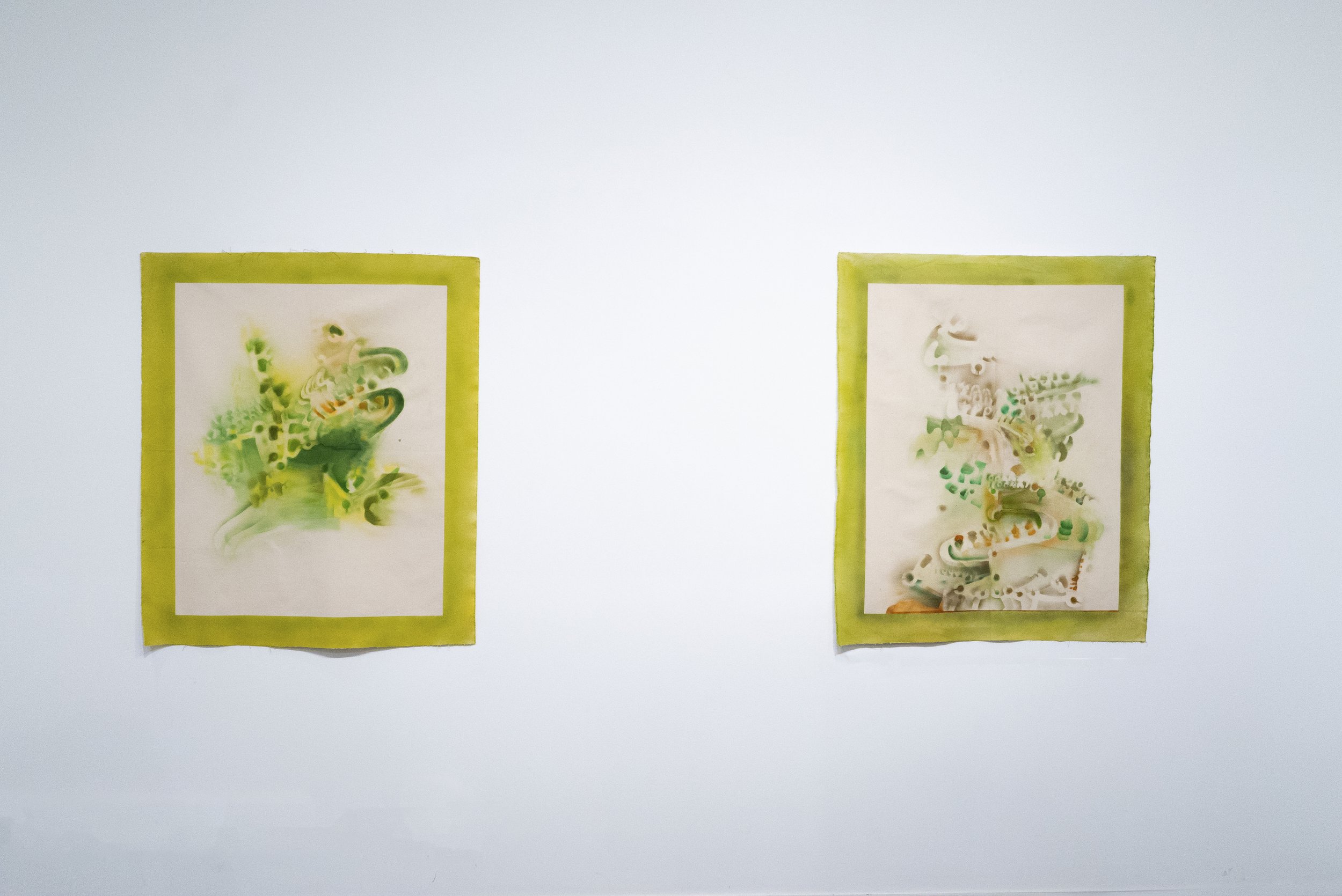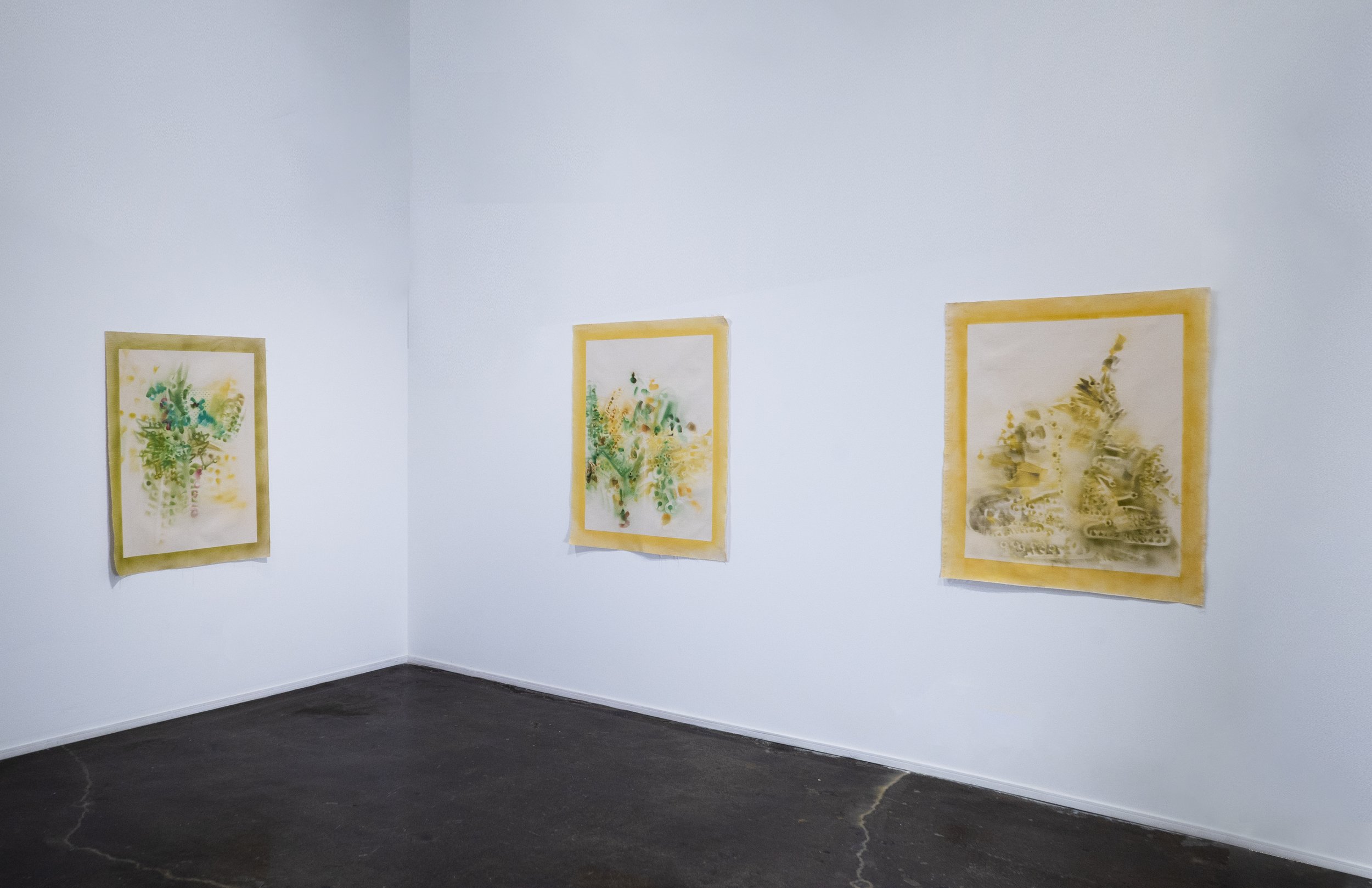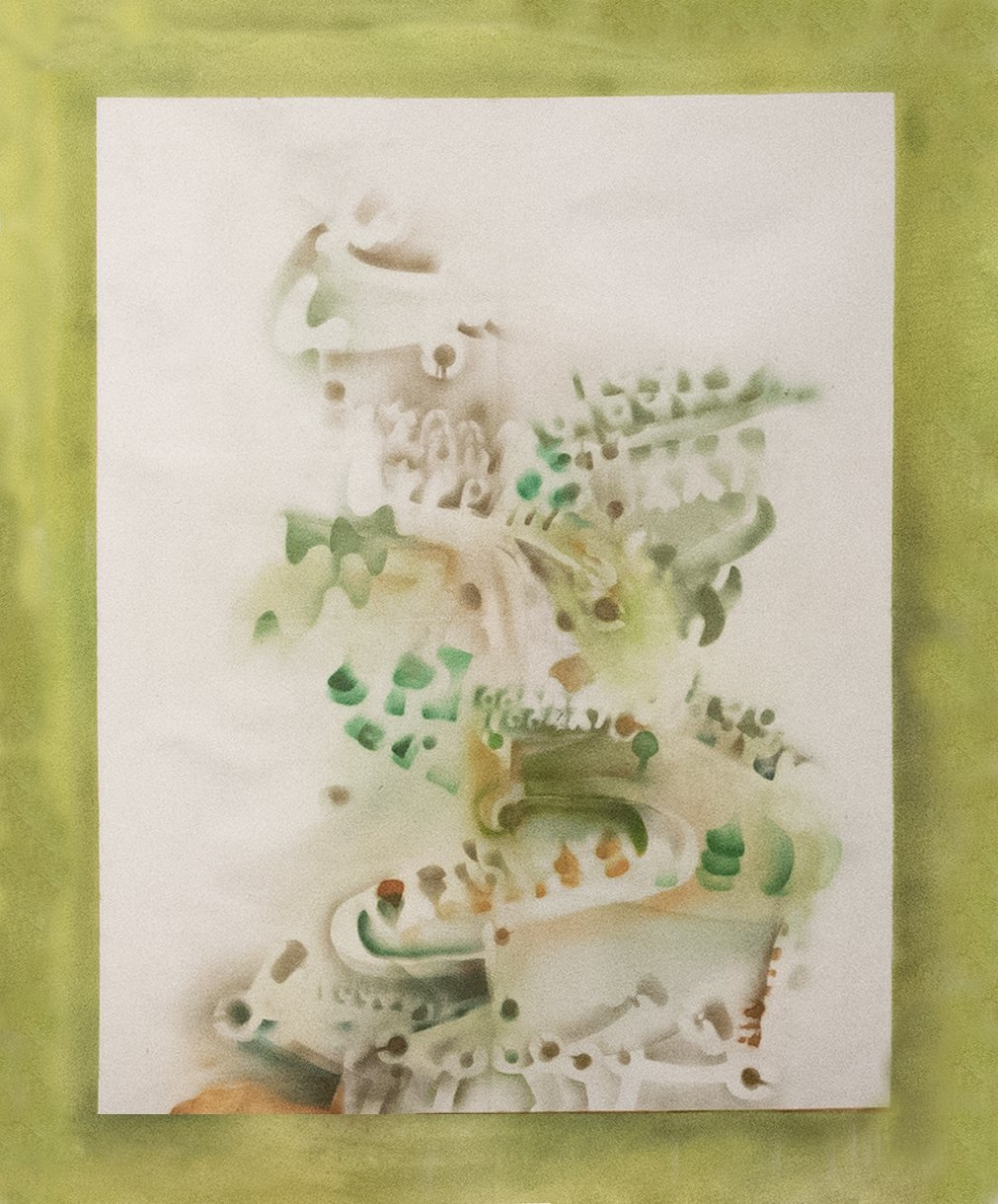By Hamza Walker
These paintings consist of a single sigil, an occult letter-form believed to cast a spell upon its viewer. This sigil is derived from a 15th century Persian talisman promising the power of flight. In this incarnation, the sigil appears in arrangements invoking new spells whose central subject is wish fulfillment. The paintings playfully underscore the power of the sigil as the letter-form is formally subject to improvisatory “flights” of fancy. The compositions are framed in colors whose shades and variety instigate a viewing pleasure that, as it relates to the wish, serves as a downpayment.
In terms of both paint application and support, these paintings have a playfully uneasy relationship to a Western, fine art, painting tradition. Despite their having been incorporated into the fine arts, airbrush and stencil belong as much, if not moreso, to graffiti and commercial illustration than easel painting. Of all surfaces, the stretched canvas is arguably the most foreign to airbrushing, an application that is most at home on automobiles. In this respect, the unstretched canvases read as decidedly provisional. If anything, they are mediators between airbrushing directly on the wall and the lone painting on silk, which is suggestive of a scarf. In other words, the canvases are literally caught between so-called “street art” and the decorative arts. Just as the primacy of painting as the standard bearer of the visual arts is being invoked, however provisionally, it is also being tampered with.
But don’t let the absence of stretcher bars fool you. They are very sturdy paintings nonetheless. What they lack physically is recuperated graphically courtesy of the broad, colored border. As a floating configuration and reconfiguration of a stenciled calligraphic motif, the imagery, however, is not structured by the border, which reiterates the rectilinear edges of the canvas. The border is squarely a frame demarcating a visual arena. It is tethered to the imagery more through color than geometry in any compositional sense. Moreover, given that it has been applied directly to the wall, the imagery has been shown to be fugitive. It need not play inmate to a frame doubling as prison guard. Having relinquished their stretcher bars, maybe these canvases are not so much a prison as a halfway house. Unlike traditional painting whose imagery serves a life sentence, these paintings offer its imagery the possibility of parole.








